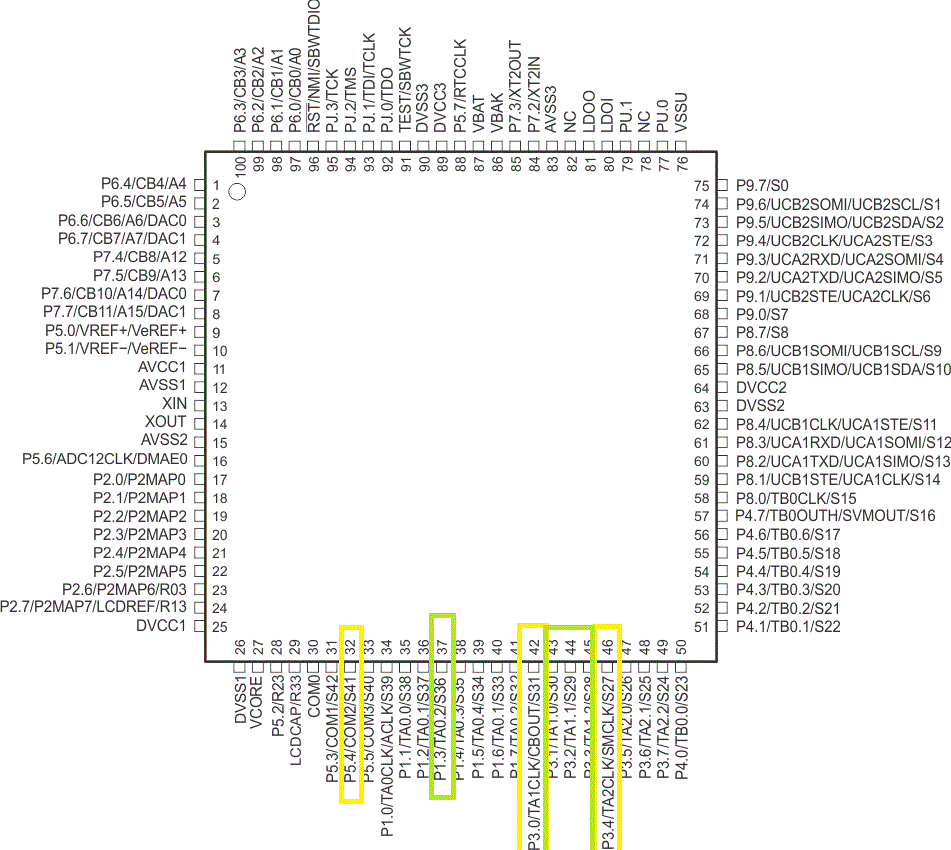Other Parts Discussed in Thread: MSP430F6459
Greetings,
We're using MSP430F6459_HIREL microcontroller. Its new to us and we're running out of time. Our requirement is to provide 3 frequency signals ( Square wave ) as input to the microcontroller. For now, we've given those signals to the pins: 34, 42 & 46. Are these pins suitable for this application? If not, please let us know the exact purpose of the respective pins. Also, suggest us the apt pins for frequency signals as input to the controller.
The frequency ranges are as follows:
1st : 15kHz,
2nd : 77Hz &
3rd : maximum Pulse rate : 2 pulse/sec
minimum Pulse rate : 1 pulse /12 sec
all are Square wave only
Thanks and regards,


